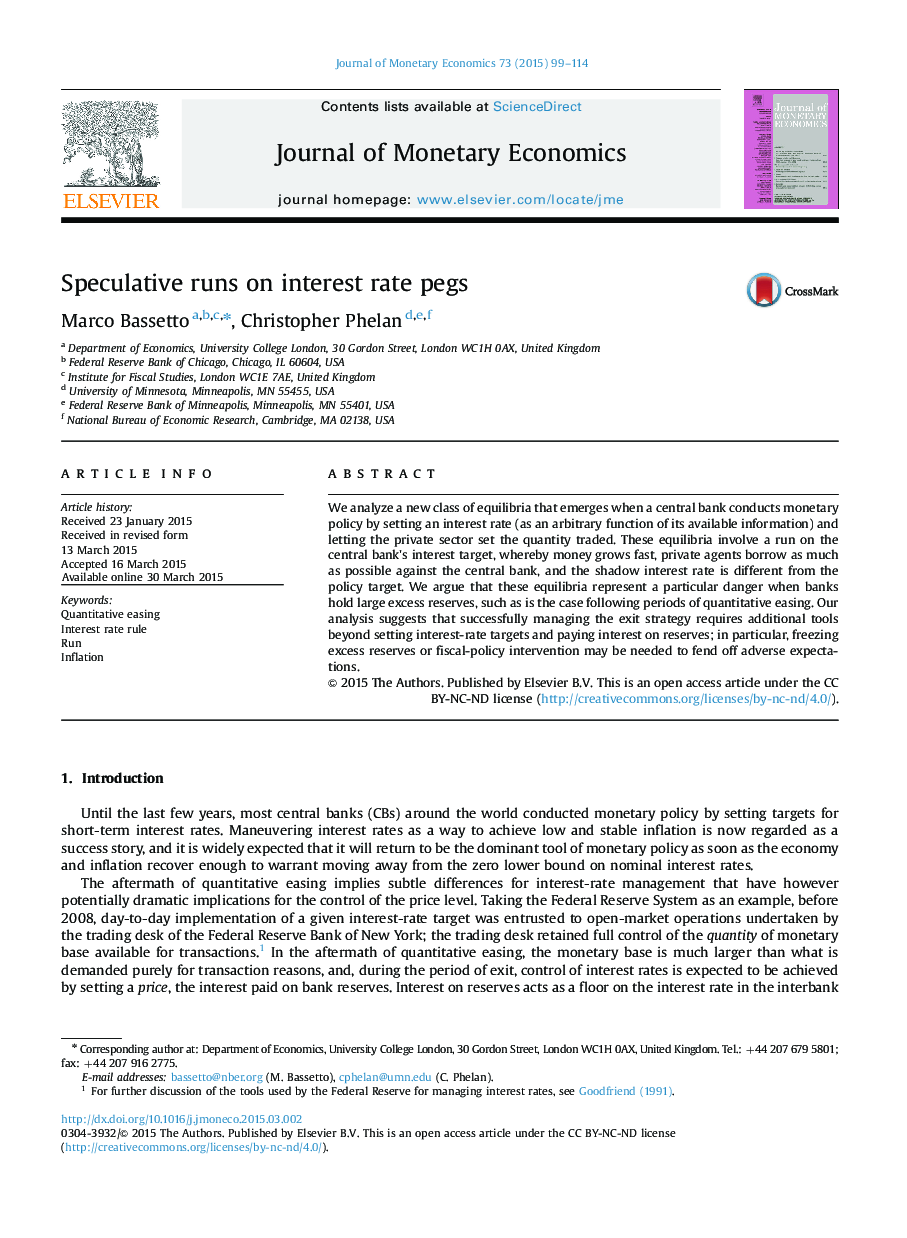| Article ID | Journal | Published Year | Pages | File Type |
|---|---|---|---|---|
| 7368823 | Journal of Monetary Economics | 2015 | 16 Pages |
Abstract
We analyze a new class of equilibria that emerges when a central bank conducts monetary policy by setting an interest rate (as an arbitrary function of its available information) and letting the private sector set the quantity traded. These equilibria involve a run on the central bank׳s interest target, whereby money grows fast, private agents borrow as much as possible against the central bank, and the shadow interest rate is different from the policy target. We argue that these equilibria represent a particular danger when banks hold large excess reserves, such as is the case following periods of quantitative easing. Our analysis suggests that successfully managing the exit strategy requires additional tools beyond setting interest-rate targets and paying interest on reserves; in particular, freezing excess reserves or fiscal-policy intervention may be needed to fend off adverse expectations.
Related Topics
Social Sciences and Humanities
Economics, Econometrics and Finance
Economics and Econometrics
Authors
Marco Bassetto, Christopher Phelan,
